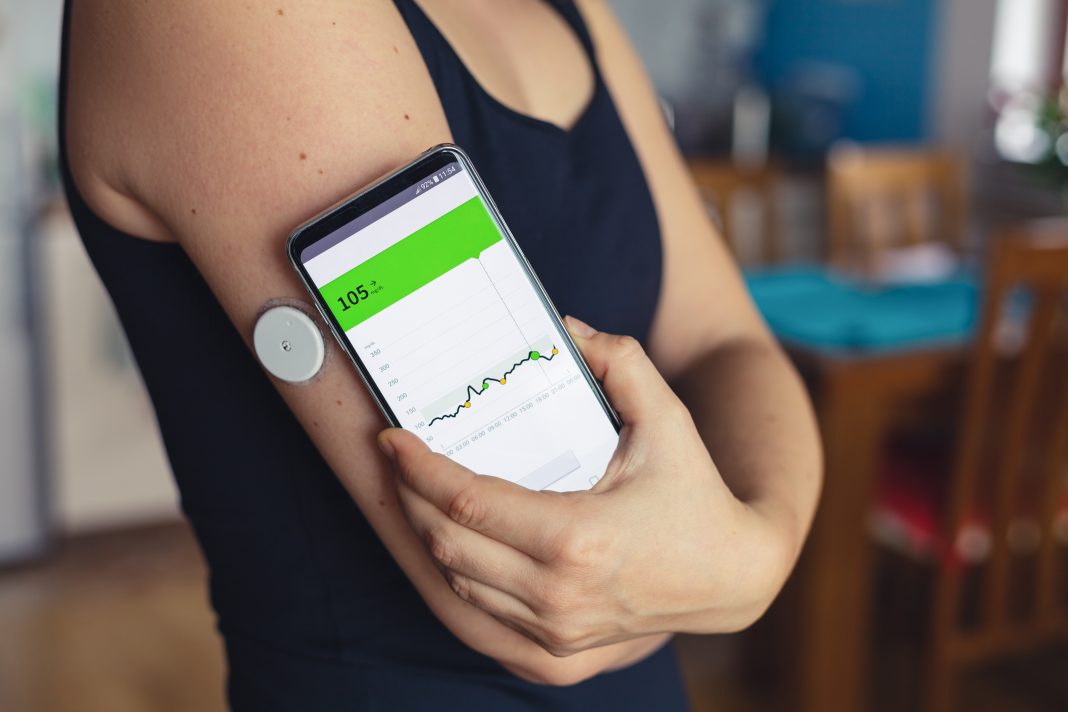Continuous glucose monitors, or CGMs have been rapidly gaining popularity over the past few years, with a greater acceleration over the past few months, thanks to TikTok influencers and companies such as ZOE.
What are continuous glucose monitors?
Continuous glucose monitors are wearable devices that you attach to your body (normally on your arm) and monitor your blood sugar (aka glucose) levels. You may have heard of DEXCOM or Abbott FreeStyle Libre 2. They are types of CGM, offered on the NHS to those with type 1 diabetes. Because it is attached to you, it can take continuous readings of your blood glucose levels – as implied by the name.
They’re used by those with diabetes to help control their blood sugar levels and are typically paired with an insulin pump as part of a closed-loop system. If the CGM detects that the glucose levels are out of range, it will administer insulin to help counteract it and prevent hypo/hyperglycaemia.
Why do people without diabetes use them?
Good question.
CGMs seem to be the latest lifestyle and nutrition trend sweeping the country at the moment. They are of course prescribed to those who medically need them through the NHS, but can also be purchased for personal use through nutrition apps like ZOE. The aim is to show how blood sugar changes after eating.
These personal use CGMs are backed up by “ground-breaking” research that, surprisingly, was sponsored by ZOE themselves. Cue: conflict of interest. It’s therefore not hugely surprising that the results “point to the need for personalised eating plans to sustainably combat weight and health challenges”, which can be conveniently purchased through the ZOE app.
What are the pros and cons?
Everything has its pros and cons. This is no different – as with most things, there are some benefits. It can of course help individuals understand how different foods impact their body. This is both insightful and helpful. Your blood sugar rises after you eat, and depending on what you eat, when you eat it, and what you eat it with, the responses elicited will differ. Typically foods high in sugar and saturated fat will cause larger spikes, aligning with general guidance for healthy eating anyway.
Both hypo and hyperglycaemia (low and high blood sugar) are rare in individuals without diabetes, as our bodies (unless they have diabetes) will produce enough insulin to counteract the rise in blood sugar after we eat. It may indicate that “unhealthy” foods cause a larger spike. Once again, though, this is aligned with free government guidance on healthy eating. However, seeing the data in real-time may emphasise the extent to which this is true, even if delivered in a way designed to scaremonger.
Unfortunately, nutritional interventions cannot succeed or change a nation without education. To combat a nation’s health problems, it is essential to educate people about nutrition in greater detail. You can’t teach someone to read or write without first teaching them the alphabet, so what’s the point in trying to?
Should healthy people use them?
Whilst using a CGM can give you some interesting insights, as far as we’re concerned, unfortunately, it seems as though it could be a thinly veiled iteration of diet culture, packaged onto your arm for the low cost of £299, plus a further £24.99 per month subscription thereafter.
If choosing between a CGM (for non-medical reasons) and a nutritionist/dietitian, we would recommend the latter, allowing a more collaborative journey to expand your knowledge and improve your health.
If you are aiming to make some dietary changes to support this, as a starting point, try to focus on complex carbohydrates as much as possible and minimise your intake of simple carbohydrates. Ensure each meal or snack comprises protein and fat, in addition to carbs, to help provide a more steady release of energy. Simple changes such as these will already start to help you support more balanced glucose levels.
If you need a little added support with your nutrition, we’re on hand! Order today and start smashing your goals with personalised nutrition! Get £45 off a 3-day trial with code: BLOG45. Start your trial here.
Fresh Fitness Food provides personalised meal plans delivered straight to your door. We ensure not only that you have the nutrients you need to support your goals, but also that you have the time usually spent shopping, cooking and washing up, to engage in your favourite festive activities. To discuss which nutrition plan is right for you, book a call with our in-house nutrition team here.







